In the run-up to my most anticipated game release in years, I thought I’d take a look back at some previous Metal Gear Solid games in the most arbitrary way I know how: tedious list-based fanwank! Each day until The Phantom Pain is in my sweaty, shaking hand I’ll be taking a look at one aspect of what makes the MGS series special and rating each game from best to worst. (Or worst to best, depending on your perspective!)
—

The worlds of the various Metal Gear Solid games are very finely detailed. My first exposure to the series was Metal Gear Solid 2, and I recall my mind being blown while watching my friend pick individual bottles of ketchup and mayo off of a pantry shelf with his gun. A few years later I spent a week or so frustratingly plugging away at Metal Gear Solid 3, trying to figure out how the goddamn game wanted me to play it without a radar. Turns out the answer was quite simple: it wanted me to stop worrying so much, and find my own solutions for each map.
As many bullet points as each game’s feature list has, though, excessive replays will leave you with the feeling that there’s a little something still missing from the equation. Here are a few little extras I really wish each game would have included.
—
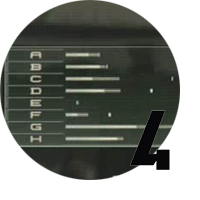
#6: Backup on Codec
The gaggle of support characters Snake can ring up on his radio or codec was a huge part of the first three Metal Gear Solid games, and even the 8-bit Metal Gear 2 before that. They provided helpful hints and suggestions about gameplay elements when the player was stuck. They carried a lot of the weight of fleshing out the game worlds with backstory and character development. Sometimes they meta-gamed you, as in one especially memorable case in MGS1 that forced the player to, literally, think outside the box.
But in Metal Gear Solid 4, Otacon and Rose is all you get. Which isn’t to say anything against these two characters; Otacon has always been a personal favorite, and Rose is actually quite pleasant to talk to without the whole nattering girlfriend undercurrent. But two contacts? In the MGS game with the most gameplay features, the biggest cast and the most bloated plot?
There’s a wealth of options we’re missing out on here. We can’t call Campbell to get mission updates. We can’t call Meryl or Raiden to get detailed info about the environment and conflicts we’re sneaking through. We can’t call Drebin to hear how big his boner is over the semi-automatic recoilless carbine we just picked up. We can’t call Sunny to hear about all the fantastic Konami games she’s playing on her PlayStation Portable™.
As a result, a big part of the essential MGS experience is lost, and MGS4 is the poorer for it.
—
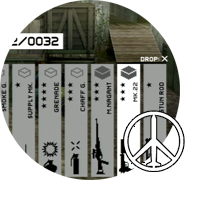
#5: Pause During Menus
The action in the first four Metal Gear Solid games paused while you went into your equipment menus, allowing you a few precious moments to think about the best load-out to clean up whatever problem you just caused for yourself by rolling into that patrolling terrorist’s line of sight. This was necessary because, as big a deal as Snake’s commanding officer makes about going in light, within ten minutes he ends up with an entire garage of weapons and gadgets strapped to his back.
Peace Walker is a multiplayer game, though, and it wouldn’t do for Player 1 to pause Player 2’s action because he’s swapping out his stun rod for his stun grenades. So in that game, instead of pausing the action, the menu screens only pause Snake. While you’re standing there rifling through your, er, rifles, all of the enemy soldiers still have their full range of movement. This has been the cause of more than one frustrating death.
A necessary evil in the world of multiplayer, to be sure, but Peace Walker applies this same limitation even if you’re playing by yourself. The feature isn’t used to create a more realistic or immersive experience, like it is in Ground Zeroes. In that game Snake can only carry a couple of items, and has a clear visual indication of what he’s doing in the game world while the player is dottering around the menu. In Peace Walker the player is carrying around a boatload of stuff, and Snake just stands stock still and upright while his player makes up his mind.
It’s usually not too much trouble to duck around a corner or into a shadow to get your equipment sorted… but the game gains nothing by forcing this restriction.
—
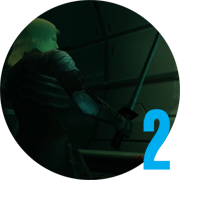
#4: Start with the HF Blade
Every Metal Gear Sold player who wanted Grey Fox’s sword had their prayers answered at the end of Metal Gear Solid 2 when Snake presents Raiden with the High-Frequency Blade. Suddenly the player had much cooler melee options than punching or grabbing, and a use for that second control stick which mostly just sat there unloved throughout the game. The HF Blade had a very satisfying motion to it, giving Raiden new avenues of offense and defense to explore: he could use it to deflect bullets, he could do wide sweeps or quick stabs, and if he was feeling really fancy he could execute a Zelda-style circle slash. It gave definition to a character who, by design, had spent the whole game without an identify of his own. It felt like the kind of thing the whole game could have been based around.
Unfortunately, all those players who had their prayers answered had them rudely dashed again when the HF Blade was taken away from them after two scenes and a boss fight. But there was hope: it’s MGS tradition to offer new toys to play with on replays. Snake even mentions his magic bandana in the very scene he gifts Raiden his sword! Maybe the HF Blade will be in Raiden’s inventory next time we play, letting us slash our way through screens we had to carefully sneak through previously?
It was not to be. Though Raiden would get his due as Official Ninja Badass in a spin-off game over a decade later, the sword in MGS2 is forever relegated to being an endgame gimmick. This is a pretty serious grievance in a universe where Old Snake can start his mission with voodoo dolls and a solar-powered death laser.
—
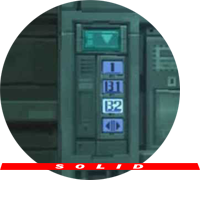
#3: A Way to Skip the Backtracking
Twice during the course of his infiltration of Shadow Moses, Snake has to drop what he’s doing and backtrack to old areas for pretty silly reasons. First he has to abandon his bleeding comrade and return to an area at the very start of the game to find a sniper rifle. Later, he has to criss-cross a screen full of boring, empty catwalks in order to reach old areas so his magic key changes shape. I see what they were going for here. In the first case they needed an excuse to get Snake away from the area so the bad guys could kidnap his girlfriend. In the second, they had sixteen barrels of exposition and needed a way to pace it out over a few extra screen transitions.
On replays, though, all the backtracking accomplishes is forcing me to be very, very bored for a very, very long time right at the tail end of my playthrough.
The Gamecube remake of MGS1, The Twin Snakes, solves both of these problems in really handy ways. There’s still a sniper rifle way back in the armory, if you want one, but there’s a non-lethal rifle in a much closer room, for your convenience. And as for the cardkey, there are handy pipes of liquid nitrogen and hot steam right there in the hangar ready to fulfill all of your magic key needs.
It’s considered an MGS faux pas to say anything positive about The Twin Snakes, though, so for purposes of this article I’m forced to ignore it. Too bad, because otherwise I’d be inclined to give MGS1 perfect marks in this category.
—
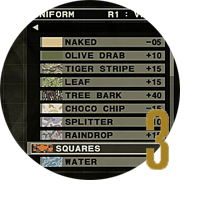
#2: Camo Quick-Change
A big element of Metal Gear Solid 3 was surviving in a harsh, natural environment. In addition to his equipment load-out Snake had to worry about finding food, tending to injuries, mapping his surroundings, and using camouflage. There wasn’t an elegant way to handle all these new features in the standard L2/R2 menus, though, so for the first time an MGS game got a big, obtrusive subscreen to handle it all. The game called this the “Survival Viewer”, but we all knew it was really a “Pause Menu”, and mostly just tolerated it.
For an even mildly-skilled player, all the contents of the Survival Viewer were pretty easy to ignore. There’s tons of food littered around the game world, injuries are few and far between as long as you’re half-decent at stealth, and no single area is really large or confusing enough to require a map. Camo, though, remains important throughout the game, and it gets really obnoxious going into the menu every few minutes so Snake can play dress-up.
The end result: there are a few different strategies for using camo in MGS3, and none of them are close to the probably-intended “pick the best camo for the situation you’re in”. Some players only switch camo when the environment changes drastically. Others ignore the system entirely and rely on distance and line-of-sight shenanigans to remain unspotted. And others put on the tuxedo and zombie face paint and play the entire game like a karate conga line.
Point is, the ability to hot-swap between the two or three most useful camo options would have gone a long way to making the mechanic feel useful, rather than vestigial.
—
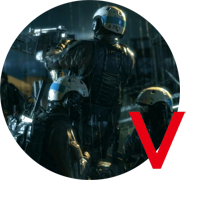
#1: A Boss Fight
Steam says I have 120 hours played in Ground Zeroes. That can’t be right. A counter must have glitched out somewhere, or maybe I accidentally left the game running in the background for a couple days. Or, well, maybe I really have sunk that much time into the game. For as little content as Ground Zeroes has, there’s a tantalizingly huge combination of ways each of the missions can be solved, and lord knows I’ve put in the time to explore them all. I shudder to think what my playtime is going to look like after a year of The Phantom Pain.
For all the fun to be had, though, Ground Zeroes is missing what is, for me, one of the defining elements of the MGS series: a boss fight. For a demo that is supposed to show the breadth of what the Fox Engine is capable of, that’s a pretty huge and glaring omission.
Maybe, with the incredible amount of freedom afforded to the player, there just isn’t room in the MGS5 games for a more narrowly-structured one-on-one combat experience? If that’s the case, it’s incredibly saddening. But if it’s not — and I have faith that it’s not — why not put a little taste of that in the prologue?
The main mission, Ground Zeroes itself, isn’t the place for a boss fight. It’s pure infiltration and extraction, and stopping things partway to force a gimmick fight would have felt very weird. But the two Extra Ops missions are non-canonical sillyfests, and would have been just perfect. Instead they tease a Psycho Mantis rematch which never materializes, and makes Raiden fire rockets at helicopters for ten minutes.
—
Alright, that’s enough bitching. Tomorrow, we’ll take a look at my favorite character from the MGS saga, relive some of his most memorable moments, and look forward to his triumphant return in The Phantom Pain. Thanks for reading.
Peace Walker’s real time menu was one of the elements adopted from Monster Hunter, but they completely screwed it up.
The reason real time item changing works in Monster Hunter is because the quick item menu takes up a small corner of the screen and you can still move to avoid attacks while using it. In Peace Walker, it takes up the whole screen and you’re left at the mercy of any enemies who see you while you’re trying to flip to the item you want.
Re: MGS2: Yeah, it’s definitely disappointing that the HF blade’s only an end of game thing. You do get to use it more in Substance’s VR missions with Cyborg Ninja Raiden, but it’s not all that fun there since the soldiers in those missions are more brutal and Raiden’s defense is so crap he can easily be put in his place with gun butts and buckshot.
Also no stealth camo for Ninja Raiden, so…